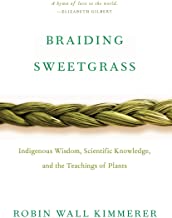Curated by Rachel Taber-Hamilton
Annotations by Sue Tait

Pagans in the Promised Land: Decoding the Doctrine of Christian Discovery
Steven T. Newcomb | 2008
Doctrine of Discovery
Mentioned as one of the books influential in the General Convention decision to repudiate the Doctrine of Discovery in 2009, Newcome demonstrates how the religious concepts of Christendom have been used to justify the taking of Indian land and denial of independence. Even if sometimes unconscious, Newcome argues it violates the doctrine of separation of church and state and still continues in influence today.
Fulcrum Pub., 2008. (346.7 New)

Unsettling Truths: The Ongoing, Dehumanizing Legacy of the Doctrine of Discovery
Mark Charles and Soong-Chang Rah | 2019
Doctrine of Discovery
The fifteenth century official church edict allowed European Christians the right to claim as unoccupied the territories they “discovered” and was subsequently institutionalized as an implicit national framework that justifies American triumphalism, white supremacy, and ongoing injustice. The authors claim that healing can begin when such beliefs are unsettled.
Intervarsity Press, 2019. (261.7 Cha)

An Indigenous Peoples' History of the United States
Roxanne Dunbar-Ortiz | 2015
Doctrine of Discovery
Largely omitted from history, the centuries-long genocide of the settler-colonial regimen is here highlighted as a bottom’s up reframing of US history and sheds new light on the national narrative. A version for middle school and high school youth brings the story forward to include Standing Rock.
Beacon Press, 2015. (970.004 Dun)

Savage Anxieties: The Invention of Western Civilization
Robert A. Williams, Jr. | 2012
Doctrine of Discovery
What is the source of ideas such as “savage” to characterize the natives living in the new world? Williams looks at the origins of prejudice and racism that has been rife in Western civilization throughout history, and at those rhetorical strategies to justify such behavior through patterns of thinking both historically and currently and draws some unnerving conclusions about which ideas are ascendent.
St, Martin’s Press, 2012. (305.8 Wil)

Discovering Indigenous Lands: The Doctrine of Discovery in the English Colonies
Robert Miller and others | 2010
Doctrine of Discovery
Presenting new information on the international legal principal we know as the Doctrine of Discovery, the focus is on the way it is used in Australia, Canada, New Zealand, and the United States. In that doctrine, practitioners justified property claims with the religious and ethnocentric ideas and claims of European and Christian superiority and promoted the political and commercial rights of inhabitants. It still does.
Oxford University Press, 2010. (342.42 Mil)

We All Go Back to the Land: The Who, Why, and How of Land Acknowledgements
Suzanne Keeptwo | 2021
Land Acknowledgement
Land Acknowledgements are intended to be an act of reconciliation between Indigenous and non-Indigenous people, but routine use has sometimes sapped the meaning from the practice. Keeptwo wishes to explore and acknowledge the deep reverence Indigenous people have for the land and for their ancestors. Her believe in the ethics of the Original People is based on the earth and its “interconnection to the well-being of the human species.” She writes to Canadians, but her words are applicable to all.
Suzanne Keeptwo, 2021. (305.8 Kee)

Seeing Red: Indigenous Land, American Expansion, and the Political Economy of Plunder in North America
Michael John Witgen | 2021
Land Acknowledgement
Against all odds, the Anishinaabeg resisted removal from their land, in part because they became key players in the political economy of plunder that drove the white settlement, but also because they leveraged their political savvy to advance a “dual citizenship” that allowed mixed-race traders to claim a place in society, and challenges our assumptions about the inevitability of US expansion.
Omohundro Institute and University of North Carolina Press. 2021. (pre-order)

Property and Dispossession: Natives, Empires and Land in Early Modern North America
Allan Greer | 2017
Land Acknowledgement
Examination of the processes which gave rise to forms of land tenure and the dispossession of natives in the 16-18th centuries in Canada, Mexico and New England, a process called “property formation."
Cambridge University Press, 2017. (323.1 Gre)

Rescuing the Gospel from the Cowboys: A Native American Expression of the Jesus Way
Richard Twiss | 2015
Bridging the Christian/Indigenous Relationship
“The gospel of Jesus has not always been good news for Native Americans” Twiss states plainly. But despite the far-reaching effects of colonialism, some Natives have forged culturally authentic ways to follow Jesus. In his final work, the author surveys the complicated history of Christian missions among Indigenous peoples and voices a “hopeful vision of contextual Native Christian faith” (from publisher’s comments).
IVP Books, 2015. (971.004 Twi)

Shalom and the Community of Creation: An Indigenous Vision
Randy Woodley | 2012
Bridging the Christian/Indigenous Relationship
Based in ideas of co-creation of theological systems that foster wholeness and peace, Woodley introduces the “Harmony Way,” a concept that parallels the biblical idea of shalom and suggests that this path can lead to reconciliation, wholeness, and peace between Indigenous people and Euro-Westerners and can call us back to experience God’s love and care in the created world around us.
Eerdmans Publishing Company, 2012. (230.089 Woo)

Native American Testimony: A Chronicle of Indian-White Relations from Prophecy to the Present, 1492-2000
Peter Nabokov (Editor), Vine Deloria (Foreword) | 1999
Bridging the Christian/Indigenous Relationship
Spanning 500 years, documents from a wide range of sources present a history of Native American and white relations as seen through Indian eyes and voices, from first contacts with European explorers to very recent history. Documents in this collection include traditional narratives, autobiographical accounts, government transcripts, interviews, and more.
Penguin, revised and updated edition. 1999. (970.004 Nat)
United Nations Declaration on the Rights of Indigenous Peoples
United Nations | 2007
Bridging the Christian/Indigenous Relationship
More information: https://www.un.org/development/desa/indigenouspeoples/wp-content/uploads/sites/19/2018/11/UNDRIP_E_web.pdf

Indigenous Nations' Rights in the Balance: An Analysis of the Declaration on the Rights of Indigenous Peoples
Charmaine White Face | 2013
Bridging the Christian/Indigenous Relationship
In 1994, two UN groups began formal work on the document which had been in discussion for many years, and which was finally passed in changed form in 2007. White Face provides an analysis to all three working documents, their underlying assumptions leading to the differences, and the frightening idea that the rule of law can be used as a weapon to disregard the objections of Indigenous peoples and as a vehicle for ongoing theft. She was one of the representatives at the UN 2007 convention in Geneva.
Living Justice Press, 2013. (323.11 Whi)

Think Indigenous: Native American Spirituality for a Modern World
Doug Good Feather and Doug Red Hail Pineda | 2021
Native Spirituality and the Environment
Lakota wisdom, handed down through the generations, can help us to remember that all beings are divinely connected through conscious living and mindful consumption, discovering the interconnected web and the spiritual intelligence found in our hearts.
Hay House, Inc. 2021. (299.7 Goo)

Braiding Sweetgrass: Indigenous wisdom, scientific knowledge and the teachings of plants
Robin Wall Kimmerer | 2014
Native Spirituality and the Environment
The ways of perceiving the world through the lens of science, and also through the Potawatomi wisdom of her people, explored and combined by this lecturer whose understanding of the world shares a dual focus. Humans are seen as a part of creation, and also part of an ecological consciousness that acknowledges our reciprocal relationship with the world.
Penguin, 2014. (305.8 Kim)

Native: Identity, Belonging, and Rediscovering God
Kaitlin B. Curtice | 2020
Native Spirituality and the Environment
As a citizen of the Potawatomi Nation and a Christian, Curtice shares her experience of faith through the dual lenses, looking honestly at the ways faith has been instrumental in the destruction of Indigenous nations and the legacy it left.
Brazos Press, 2020. (277.308 Cur)

As Long as Grass Grows: The Indigenous Fight for Environmental Justice, from Colonization to Standing Rock
Dina Gilio-Whitaker | 2020
Native Spirituality and the Environment
Through the lens of what she calls “Indigenized environmental justice,” Gilio-Whitaker, researcher and activist, explores the history of treaty violations, protection of sacred sites and even food and water. Not only the history of resistance to government and corporations, but offers an approach to environmental justice activism and policy.
Beacon Press, 2020 (970.004 Gil)
